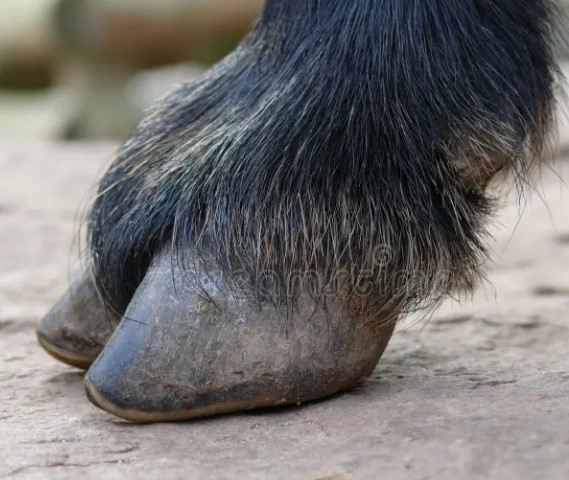Australia: Beef exports to Southeast Asia fall

Total beef exports to Southeast Asia (SEA) fell 25% year-on-year in February. With a limited number of approved suppliers, beef exports to Malaysia have fallen sharply due to limited domestic supplies. Despite the overall decline in beef exports to Southeast Asia, Singapore, Thailand and Vietnam showed moderate growth.
Prolonged restrictions and closures of catering outlets, limited supply of livestock led to a decrease in beef trade at the beginning of the year. For Southeast Asia (SEA), total volumes for the first two months of 2021 are down 25% year-over-year.
The biggest drop in Australian beef exports was to Malaysia, down 68% year-over-year in the first two months of 2021. The number of approved suppliers of Australian beef to Malaysia is limited as the market maintains a strict import regime. Supply constraints and the current supply shortage in Australia are the main catalysts for the decline in overall volumes. The sharp decline in Malaysian beef exports is also exacerbated by a strong Australian DOLLAR.
Increased numbers of Australian livestock held for restocking purposes led to a slight increase in grain beef exports, especially chilled beef, which rose by 22% in the 12 months to February.
Exports to Indonesia followed similar trends, down 21% in January and February from a year ago. Continued financial uncertainty and social restrictions on catering have put downward pressure on beef exports, with importers looking to avoid excess stocks. However, despite a year-on-year decline in total exports, volumes have been steadily increasing since November, when Indonesia began easing COVID-19- related restrictions .
Despite the overall decline in EXPORT volumes, shipments to Singapore and Vietnam remained stable in the first two months, at the level of last year. More households are choosing to eat home-cooked meals rather than dine out, which has helped reduce further losses in the catering sector for Australian beef exports.
Read together with it:
- Парагвай: Экспорт субпродуктов является растущей отраслью и уже достиг 95,4 млн долларов СШАЭкспорт говяжьих субпродуктов в этом году значительно вырос. К концу августа выручка составила 95,4 млн долларов США по сравнению с 54,6 млн долларов США на тот же конец прошлого года. По данным SENACSA, в конце августа этого года было экспортировано 51 миллион килограммов мяса по сравнению с 33,7 миллиона килограммов на конец того же месяца прошлого года. Экспорт субпродуктов увеличился на 51,3%....
- Новые горизонты сотрудничества: Россия и Аргентина обсуждают совместный доступ на рынки продукции животного происхожденияОдной из ключевых тем конференции стал контроль за производством ветеринарных препаратов в Аргентине. Аргентинская сторона представила свою систему контроля, включающую Управление ветеринарных продуктов и Управление лабораторий животных. Эти организации обеспечивают высокие стандарты безопасности, так как каждая производственная единица подвергается проверкам каждые 3-5 лет и зарегистрирована в ин...
- С января по июль экспорт свинины из ЕС вырос на 1,6%На втором месте оказались Нидерланды с объёмом экспорта в 392 000 тонн. Дания экспортировала свинину в третьи страны с объёмом в 308 000 тонн, что примерно на 13% меньше, чем в предыдущем году. Германия экспортировала 180 000 тонн, что на 18% меньше, чем годом ранее. Это было обусловлено, главным образом, дополнительными ограничениями на экспорт, вызванными вспышкой ящура в начале года. Помимо зап...
- Московская область планирует нарастить мясное производство на 25% к 2030 годуВ Московской области более 100 предприятий уже выпускают около 305,000 тонн мяса, из которых значительная доля поступает от 19 ведущих производителей свинины и мяса птицы. Также в регионе реализуются два новых инвестиционных проекта: в Можайске строится утиная ферма на 125,000 птиц, а в Ступино — овцеводческое хозяйство на 11......
- В Кремле пообещали ответ на санкции сообразно интересам РоссииДмитрий Песков В Кремле начали анализировать введенные санкции для разработки ответных мер, заявил пресс-секретарь президента России Дмитрий Песков, передает корреспондент РБК. «В настоящий момент анализируются те санкции, которые определены. Будем делать то, что наилучшим образом соответствует нашим интересам», — сообщил Песков, отвечая на вопрос об ответных мерах России. 19-й пакет санкции Еврос...
- Zakharova promised "tough steps" in response to the 19th EU sanctions package.Maria Zakharova RUSSIA will respond harshly to the latest round of EU sanctions, Russian Foreign Ministry spokesperson Maria Zakharova stated on TELEGRAM . The EU previously adopted the 19th package of anti-Russian sanctions, which included a ban on the import of Russian LNG, new restrictions on oil companies, ships, banks, and the EXPORT of certain goods, as well as restrictions on the movement o...
- Чего ожидать от «одной из самых рискованных» поездок ТрампаДональд Трамп начал турне по Азии, в ходе которого встретится с лидерами ключевых стран, включая Си Цзиньпина. Почему эта поездка может оказаться сложнее, чем недавние визиты в Европу и на Ближний Восток — в статье РБК Дональд Трамп Какие встречи запланированы в ходе турне Президент США Дональд Трамп вылетел из Вашингтона поздним вечером в пятницу, 24 октября, и утром в субботу его борт приземлитс...
- С начала года Московская область увеличила экспорт свинины на 35% в стоимостном выраженииМосковская область продолжает укреплять позиции одного из ведущих экспортеров продукции агропромышленного комплекса в России. По итогам 9 месяцев с начала года регион нарастил экспорт свинины на 35% по стоимости. В натуральном выражении объем поставок составил 85 тысяч тонн, что на 17% больше, чем за аналогичный период прошлого года. В Министерстве сельского хозяйства и продовольствия Московской о...





























































